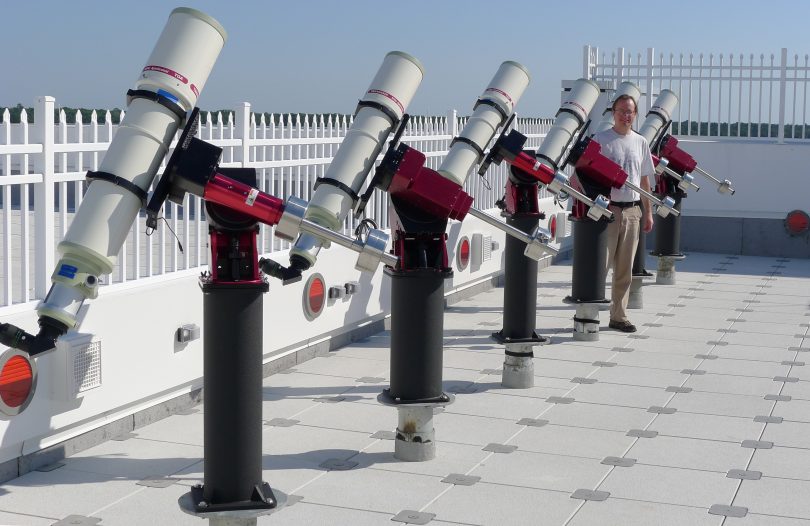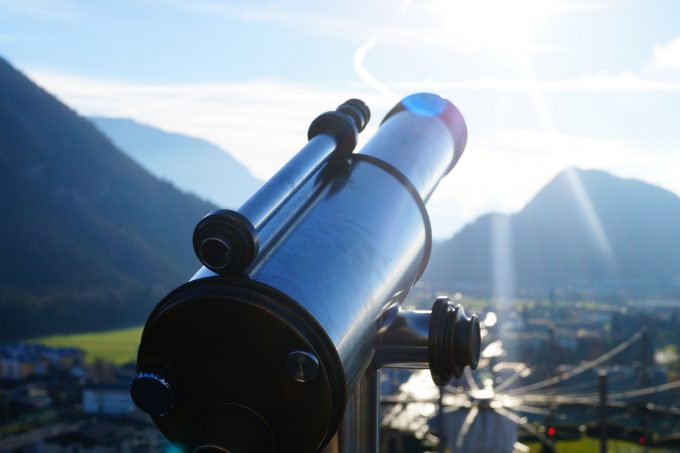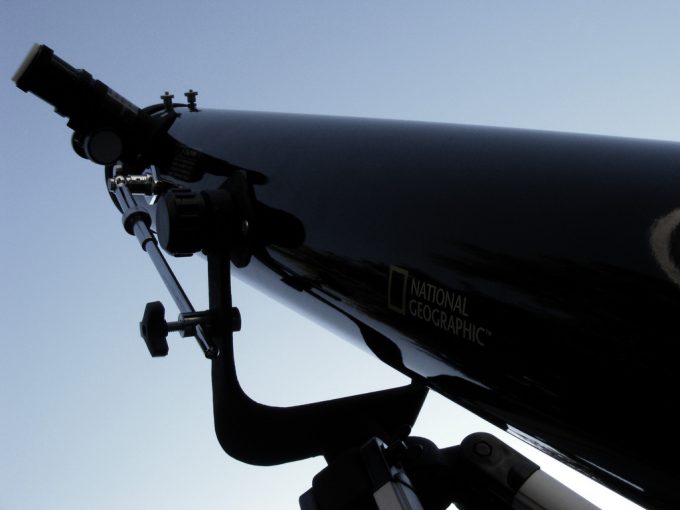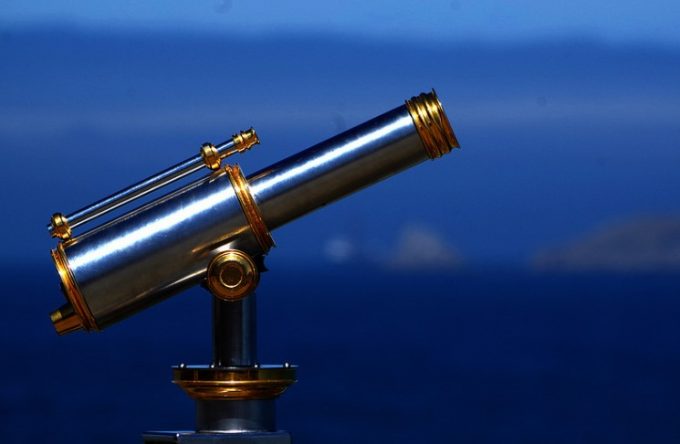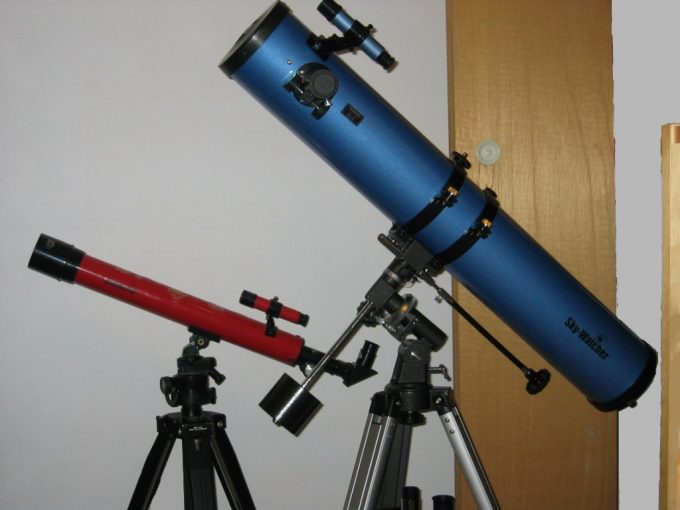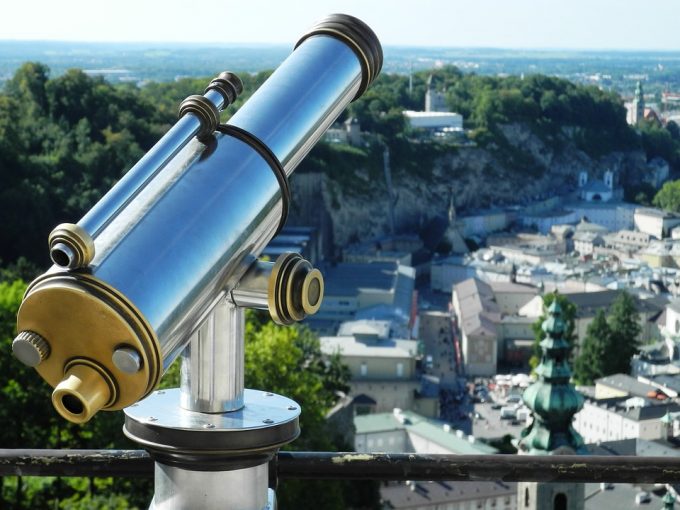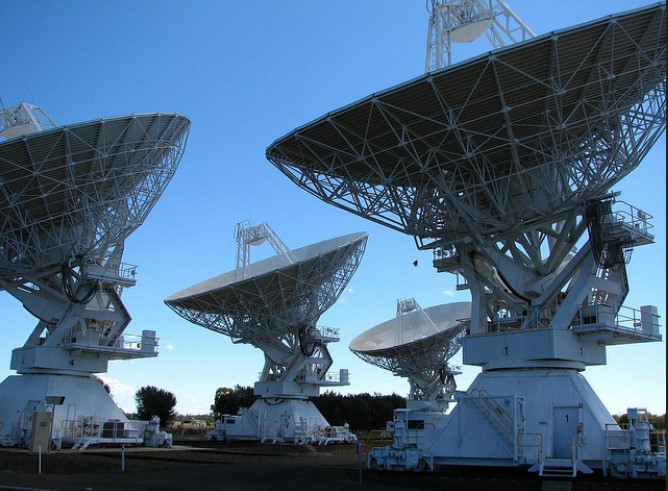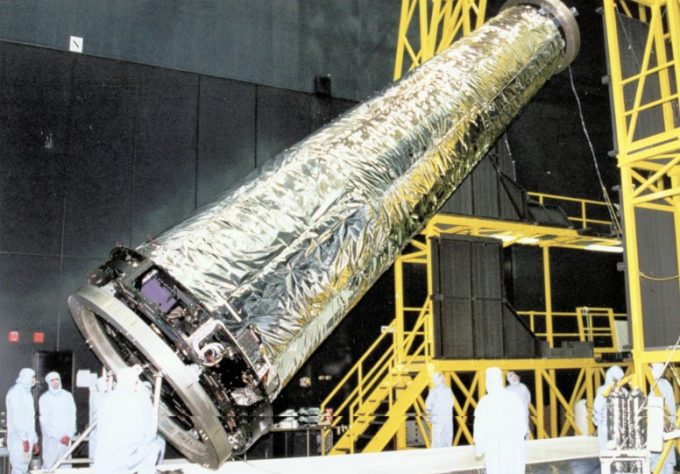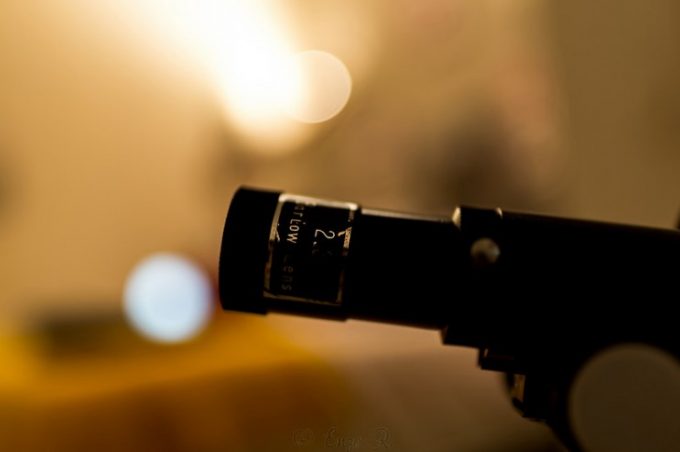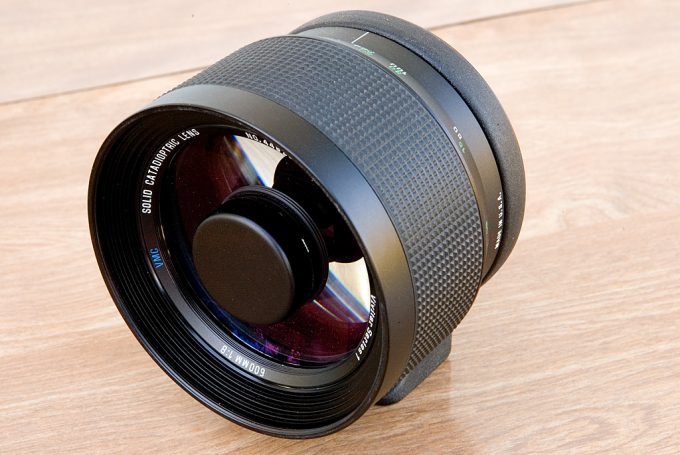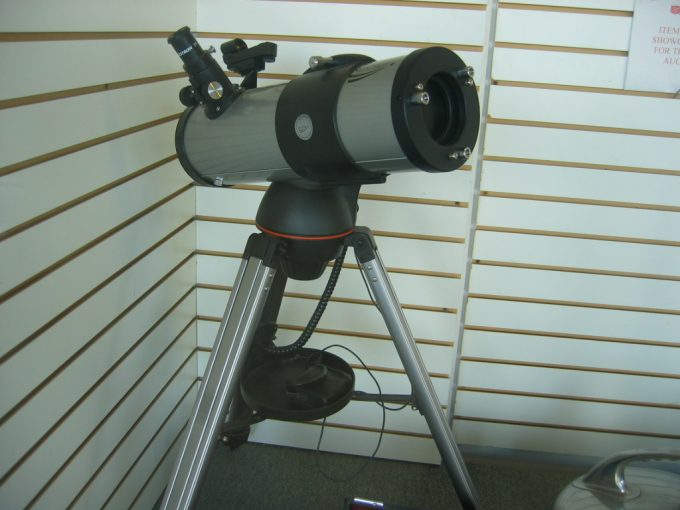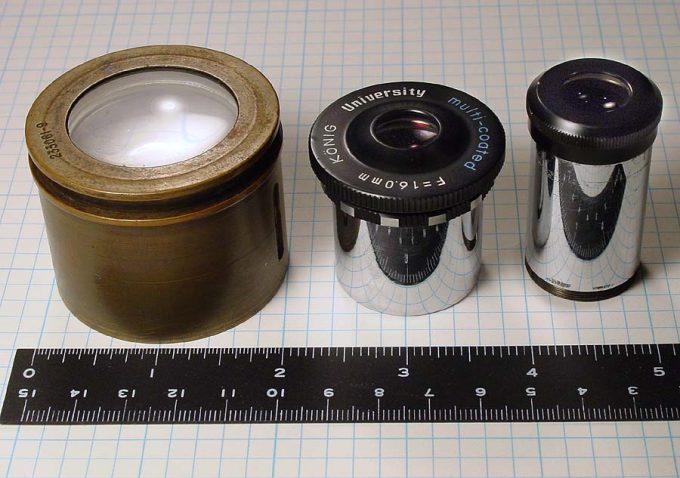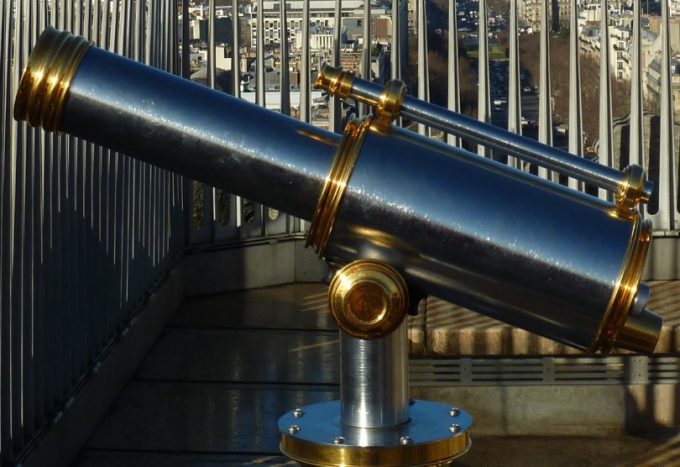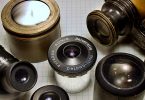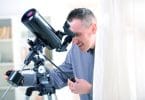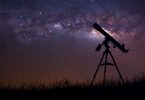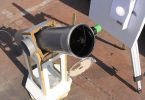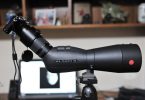If you are just getting into astronomy you might feel a bit intimidated by all the different types of telescopes and what all the corresponding values that go with them are. You may not know where to begin, but luckily you’ve found this article.
We are going to give you a basic break down on the different types of telescope so that you will know the differences between them and be able to select the best one for your needs.
What are Telescopes?
Telescopes are an instrument that is designed to observe remote objects. The primary aim of the design is to view astronomical objects like celestial bodies.
The telescope is initially regarded as optical telescopes, however, there are other telescopes that are designed to perform other functions like reading the spectrum of electromagnetic radiation and detecting other signals. Their working mechanism is quite easy.
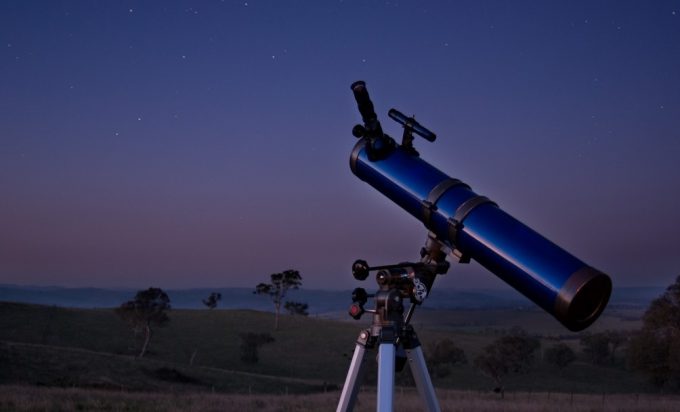
They increase the apparent angular size of distant objects while simultaneously increasing the brightness of the object from that said distance. They have one or more curved optical elements like lenses or mirrors that allowed them to perform their work excellently.
The lenses and mirror from telescopes gather light or other radiation and bring the light/radiation closer to a focus. It is at this point that the image can either be observed, photographed or studied.
Optical telescopes have been used for centuries in astronomical studies while their function in other non-astronomical studies began not long ago. The primary purpose of a telescope is to collect and focus the photons i.e. gather light.
Advantages of using a telescope
Telescopes have been around for centuries with astronomers and other scientists using them to enhance our knowledge and understanding of the current celestial knowledge. What then do you stand to gain by using a telescope?
A Bigger Field of View
This is perhaps the most important function of a telescope. The functionality is very obvious as the aperture of a telescope is several times larger than the aperture of the human eye.
The large aperture size of the telescope allows us to view objects that normally will be too tiny or invisible to the eye. The light-gathering power of a telescope is in direct proportionality to the area of its aperture and thus relies on the square of the mirror’s radius.
Longevity
The telescope is specially designed to have the ability to record light for an extended period of time. This feature is made possible by using a photographic film or electronic detectors such as photometers or CCD detectors.
This feature is very beneficial to us since our eyes lack that ability to record or store light. Long-exposure photograph when viewed and recorded using a telescope are able to reveal objects that are too tiny to be seen with the naked eyes or even viewed using a small telescope.
This function indicated that there are images that a telescope can capture using this function that the eye cannot, even if the object is viewed using a telescope.
Superior and Advanced Resolutions
This point doesn’t need to be reiterated but it is one of the main reasons why we use telescopes in the first place. The resolutions of telescopes are far superior to those of the human eye.
Their resolution is advanced and far more superior to our eyes and this allows them to discern fine details of an image. Mathematically, the resolution of a telescope is directly proportional to the observed wavelength and it is inversely proportional to the telescope’s diameter.
Perfect view of Celestial Bodies
The science world had to contend with mere theories about our planet and the universe in general for centuries. We knew about our planets but our knowledge was mere speculation. All these changed when astronomers started using telescopes to view our galaxy and other celestial objects.
The knowledge we had before were either validated or discarded as men were able to view celestial objects and give accurate information. Using the telescopes will give you visual access to other parts of the universe that centuries ago, men didn’t know they had existed or couldn’t prove their existence.
These are the main advantages of using a telescope and why it will always remain very important. They have even been used in other projects and fields aside from astronomy and they have brought about so much success in all those fields.
Types of Telescopes
There are three basic types of telescopes (the third one is a combination of the first two). The objective is the part that gathers the light in a telescope and it is the main determinant as to which class a certain telescope falls.
A refractor telescope has a glass lens as its objective. The lens is located at the front of the telescope and this refracts the light as it passes through the telescope lens. The objective of a reflector telescope, on the other hand, is a mirror.
The position of the mirror is close to the rear of the telescope with its light being reflected immediately it hits the mirror. The Cassegrain Telescopes or Catadioptric telescope is a combination of the two. It uses both mirrors and lens as its objective.
Reflector Telescopes
These are also called Newtonian telescopes. They are the simplest of telescopes and they use mirrors as their objectives. The eyepiece of Newtonian telescopes is located at the side of the main tube.
To use the reflector telescopes efficiently, you will have to adjust the optical every now and then but the adjustment method is straight forward. To view images from this telescope, you will have to look through an eyepiece on the side of the tube up near the top.
How it Works
They work by using reflections. In the first step, the light penetrates through one end of the tube and is reflected by the primary mirror that is concave shaped while a smaller mirror at the other end called the secondary mirror receives the reflected light.
The secondary mirror also reflects the light received into the telescope’s eyepiece with the eyepiece normally mounted by the side of the telescope. You can then view the image via the eyepiece.
Advantages of Reflector Telescopes
- They are easily transported since as they are compact and portable.
- They are more affordable.
- The mirrors used to produce less optical aberrations.
- They are excellent for terrestrial viewing.
Disadvantages of Reflector Telescopes
- The mirrors need constant re-alignment as they tend to slip out of alignment very easily. This is majorly caused by knocks and bumps or when there is a temperature change.
- They are easily prone to spherical aberrations.
- They are not efficient for viewing celestial objects.
Examples of Reflector Telescopes
- Hubble space telescope
- Mt Palomar 200 Reflecting Telescope
- FS-90 800X90mm Yoke Mount
- Black 6-inch iOptron
- Advanced Series C8 100x200mm
Refractor Telescopes
This class of telescopes uses a lens rather than mirrors in gathering their light. The lens of refractor telescopes is found at the front of the tube. The refractor telescopes are the most common. You can find it in labs, stores, and several other places.
The eyepiece of the refractor mirror is located at the bottom. In terms of design, they are similar to binoculars. The images that are captured by the refracting telescopes are mirror images of the original and they can be straightened using an erecting prism.
How it Works
The technique behind this is also simple. The light enters the primary objective lens at one end and the light gets refracted to a point of focus. The resulting light is magnified by the eyepiece to form an image at the other end of the telescope.
Advantages of Refractor Telescopes
- They can view objects that are far like celestials.
- They are resistant to misalignment.
- Their glasses don’t get dirty easily as the glass surface found inside the tube is completely sealed from the atmosphere.
- It produces sharper and steadier images than similar reflector telescopes.
Disadvantages of Refractor Telescopes
- They are more expensive.
- Large refractor telescopes cannot be constructed and this hampers astronomical research.
- They are affected by chromatic aberration otherwise known as color distortion. It is a scenario where the telescope produces a rainbow of colors around the viewed image.
- Each color has its focal
Examples of Refracting Telescopes
- SkyWatch Black Diamond ED80 Doublet Refractor Telescope w/EQ3
- SkyWatch Black Diamond 120/900 ED Doublet Refractor Telescope w/NEQ6
- Saxon 909 AZ3 Refractor Telescope
- Saxon Hyperion 15012EQ5 Refractor Telescope
Cassegrain Telescopes or Catadioptric Telescope
This is regarded by most people as the advanced class of telescopes. They use a combination of lens and mirrors. Their tubes are compact and they are light weighted in nature. They have a corrector that enhances the performance of the instrument as air currents are completely eliminated.
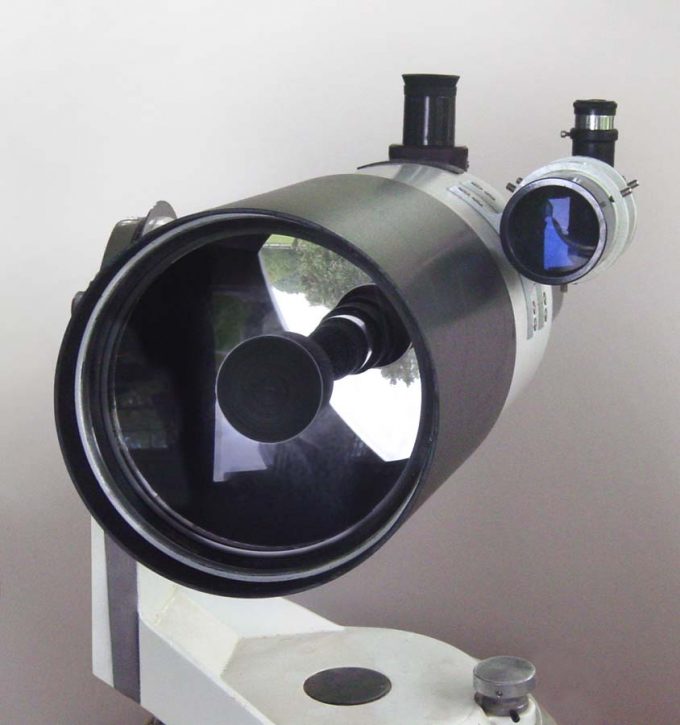
The telescope is very portable and is designed to be short in length with the light path folding back by itself.
How it Works
The working mechanism of this telescope is rather unique. To start with, light enters via correcting lens through one end and this helps reduce aberrations.
After this, the light is reflected by the primary mirror present at the other end back to the secondary mirror. The secondary mirror is mounted at the center of the corrective lens so, in theory, the light was reflected back.
Upon reaching the secondary mirror, the light is further reflected back towards a hole present in the primary mirror and finally into the eyepiece. Take note though, it is the primary mirror that is moved when focusing and not the eyepiece.
Advantages of Catadioptric Telescopes
- They are compact and portable.
- They have both lens and mirrors, therefore, they are all purpose in function.
Disadvantages of Catadioptric Telescopes
- They are prone to suffering from loss of light due to the position of the secondary mirror.
- They also suffer image shift or a jump in focus. This can be attributed to the primary mirror being moved instead of the eyepiece.
Examples of Catadioptric Telescopes
- Meade LX90 10 Catadioptric telescope.
- Celestron NexStar 5 SE 125mm 10 Schmidt-Cassegrain
- Celestron NexStar Evolution 9 Telescope Multicolor 12091
To illustrate the differences between these three styles of optical telescope quickly and easily, please refer to the table below.
| Telescope type | Objective | Portability | Purpose |
|---|---|---|---|
| Reflector telescope | Mirrors | Portable and compact | For terrestrial viewing |
| Refractor telescope | Lens | Portable | For celestial viewing |
| Catadioptric telescope | Mirrors and lens | Portable and compact | Used for both |
Other Types of Telescopes
While we have focused mainly on optical telescopes, it is important to note that there are many other styles of telescope in use around the world. Many of them are used more by observatories than back yard enthusiasts.
Radio Telescopes
This class of telescopes utilizes radio waves emitted from distant celestial objects in creating their image. It is known that every celestial body emits some kind of wave. The radio telescopes use this to decode the radio noise into its corresponding radio range of the light spectrum.
The light spectrum is then used in creating an image of that celestial object. Radio telescopes are quite different as they have large dish antennas attached to them at all times. The large antennas are used in getting those radio waves signals.
X-ray and Gamma-ray Telescopes
The x-rays telescopes use the x-rays while the gamma-ray telescope uses the gamma rays in creating an image. They differ though in functionality. The x-ray telescopes are mostly used in studying the sun, stars and other objects like supernovas.
This is because this object emits lots of x-ray particles. The gamma-rays, on the other hand, are used in confirming the occurrence of outer-planetary events like black holes, pulsars, and even supernovas.
Both classes of telescopes cannot be used though unless from a high altitude. This is to enable them to get an accurate reading and create accurate images. If placed on a lower altitude, the Earth’s rays will ultimately affect and corrupt the images produced.
Features to look for in a Telescope
Now that you have an idea of the different types of telescopes, it may also help to cover some of the basic features in a telescope. These will be mostly focusing on optical telescopes.
Aperture
This is the primary and most important feature of a telescope. Astronomers regard aperture as telescope itself because if the aperture is not good, then the whole telescope is worthless.
The aperture is the first feature being mentioned anywhere telescopes and its specifications are being discussed. It is the size of the lens or the mirror of the telescope and its main function is to focus light from distant objects.
The aperture size of a telescope determines if the telescope is good or not. This is because the aperture size is very fundamental in limiting the image quality.
When the aperture is large, it gives you access to view objects and be able to see more details of the viewed object. It also enables viewing faint celestial objects as the aperture size gets bigger.
Viewing the cosmos with a 20 cm aperture telescope, it will be like increasing the size of your eye’s pupil to 20 cm, which ultimately allows you to view the objects roughly 1,000 times fainter than what is possible with the unaided eye.
That tells you the importance of aperture to the telescope. Before you consider the magnification, you will have to look at the aperture size of the telescope.
Viewing Medium: Lenses or Mirrors
Lenses and mirrors are an integral part of telescopes. They are specially designed to focus light on the telescope. The use of a lens or a telescope is dependent on the telescope that is being designed. Telescopes that are small often use the lens for viewing while the larger ones make use of mirrors.
Consider the purpose and function of your telescope before deciding which one to stick with. For viewing terrestrial and celestial objects, telescopes that use refracting lenses are better suited for the job. Most telescopes using mirrors aren’t designed for viewing birds, sailing boats and landscapes.
If the reason for you using a telescope is to view the heavens, then using a telescope that has reflecting mirrors is the best choice to get the work done. When compared with refracting lenses, reflecting mirrors are immune to chromatic aberration (a condition where different colors are not brought together to a common sharp focus).
Thus, when deciding whether to use a telescope that has a refracting lens or a reflecting mirror, you will have to analyze what the purpose of the telescope is first.
Magnification
This is a feature that is very important and it should be considered immediately after aperture and lens of a telescope have been reviewed. The magnification is determined by the eyepiece that the telescope uses.
The magnification, therefore, can be easily changed by just swapping the eyepiece from a lower magnification to a higher one or vice versa. Be careful though, as the technicality of magnification is more complicated.
A high magnification telescope does not necessarily mean better viewing, sometimes a high magnification will not give you the desired viewing image. This is because the aperture size still remains the most important deciding factor when it comes to viewing quality.
Look at the magnification of a telescope after you have ascertained that the aperture and the lens or mirror fits your job purpose.
Telescope Mounts
The mount is very important after you have made a decision on which telescope to purchase. It is used to stabilize the telescope and determines the ease at which you will follow the celestial objects while viewing them.
For starters, know that there are two main types of mounts:
- Equatorial Mount
- Altazimuth Mounts
They are both good though differ in the way they function. The Equatorial mount makes it very easy for the user to follow the rotation of the sky as the earth is turning. This is very important especially for astronomers as it makes navigation of stars using a map very easy.
The Altazimuth mounts, on the other hand, are the simpler ones with just basic functions. They are only able to swing up, down, left and right.
To properly navigate, you will have to move the scope often so as to follow the celestial objects as the earth rotates. It is the cheaper option but it, however, lacks the flexibility of the equatorial mount.
Eyepiece
This is the least considered feature but it is still very important. Most people buying telescopes often neglect the eyepiece. Choosing an eyepiece is largely dependent on the function or purpose of buying the telescope.
The eyepiece will be the determining factor in your magnification and ensure a clear view. While most telescope sets come with two eyepieces, more can normally be acquired in accessory kits.
Final Thoughts
These are the different telescope types that are currently available. Your choice ultimately depends on what you want to do with it and certain other specifications.
You should now not only understand the differences among them but also be able to consider the important features of them. This will prove to be valuable should you decide to make a purchase.
You can share with us your experience using a telescope in the comment box below. If you do not own one, then this article will have provided you with adequate information on the different types that are available.


